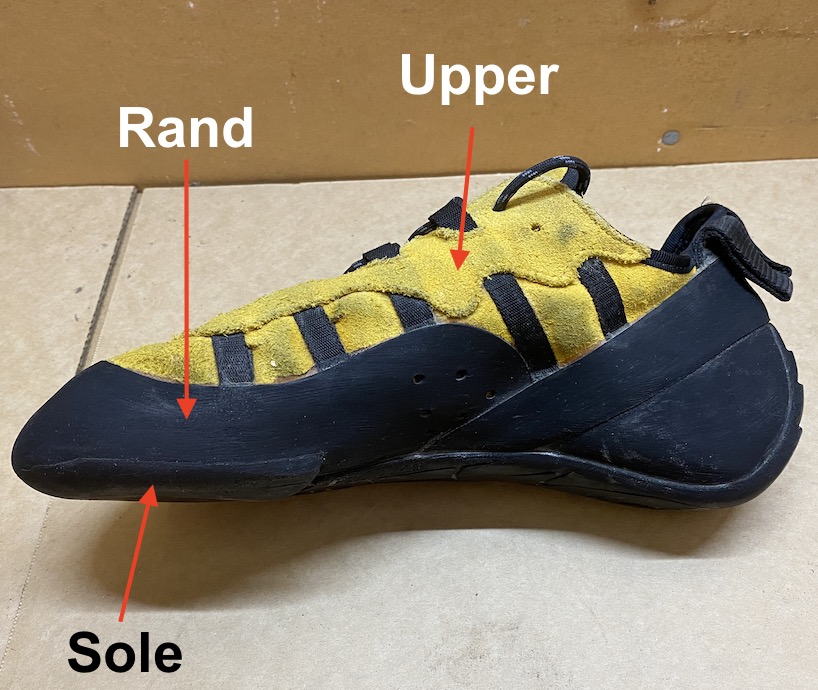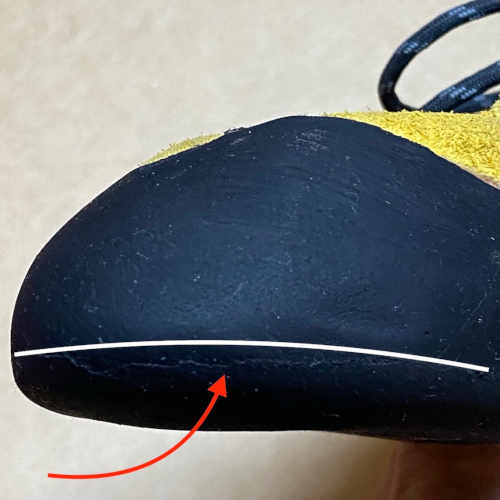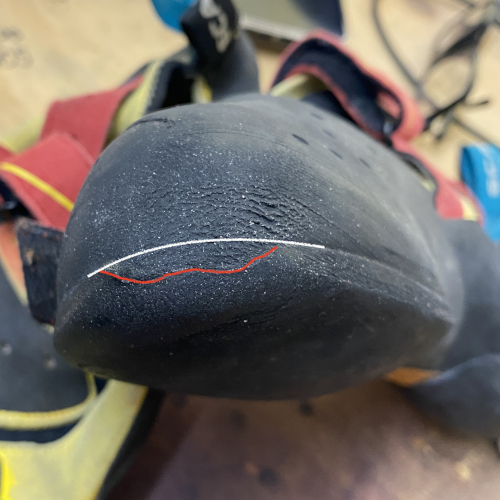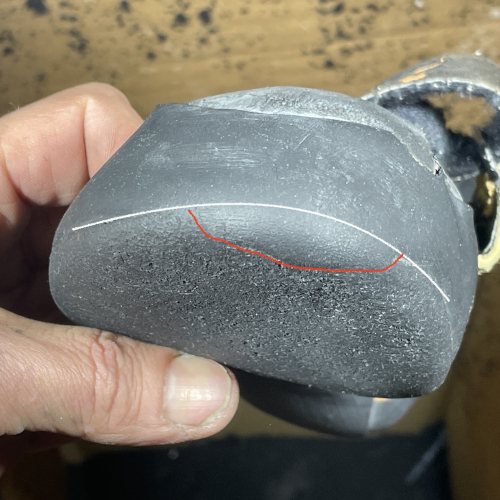How to Tell If Your Climbing Shoes Need a Resole
Climbing shoes take a beating.
Whether you’re bouldering at the gym, home or throwing heel hooks on your latest outdoor project, your shoes are grinding against rock, plastic, and everything in between. But how do you actually know when it’s time for a climbing shoe resole?
Climbing Shoe Anatomy

Here are the key signs your trusty shoes are crying out for help:
1. Rubber at The Toe Is Wearing Thin
This is the big one. The big-toe area of the sole gets the most abuse, and it’s usually the first to show signs of excessive wear. Compare the thickness of the rubber a few spots along the way back towards the heel and you will see the original thickness of your sole rubber. As the sole rubber begins to wear and dissappear you expose the rand and start to wear it down.
Pro tip: Catch it early and you’ll save money and extend the life of your shoes. Catch it early enough and you will not damage the rand! Keep reading.
 |
 |
 |
The white line indicates where the sole started, while the red arrow/line marks how much rubber you’ve worn through. The rubber you see between the white and red lines is actually your rand! Good news: the rand’s still intact — which means now’s the perfect time to resole, before things get expensive!
2. The Rand Looks Trashed
The rand is that strip of rubber wrapping around the shoe above the sole. It’s not just for looks — it protects your shoe’s structure. If you see holes, delamination, or serious scuffing on the rand, don’t ignore it. If you press on the toe of your shoes and it feels soft or has a noticeable dip/gap/soft spot/bubble, that rubber’s getting very thin. Keep abusing this area of your shoe, and you’re straight into rand damage — which means a more expensive fix (or worse, a total write-off).That’s your shoe begging for help.
Fixing a rand costs more.
3. You’ve Got Holes (Yes, Actual Holes)
It sounds obvious, but you’d be surprised how many climbers keep climbing with blown-out toes. If your big toe is poking through, it’s resole time — yesterday. Holes don’t just mess with performance, they’re a safety risk too.
4. Your Edges Are Toast
Precision edging = life on small holds. If your shoe’s edge has gone from razor-sharp to “melted pancake,” you’re losing grip and control. No one wants to smear when they meant to edge.
Time for a resole and a crisp new edge.
5. You’ve Been Using Them Non-Stop
Even if they look okay, a high-usage pair will still wear down over time. If you’ve been climbing regularly for 6+ months in the same pair, check for the above signs. Sometimes the wear isn’t super obvious — until you slip on a hold you shouldn’t have.
Final Word: Don’t Wait Too Long
Resoling your climbing shoes is like changing the oil in your car — do it early, and everything runs smoother. Do it late, and it could cost you more (or kill your shoes altogether).






